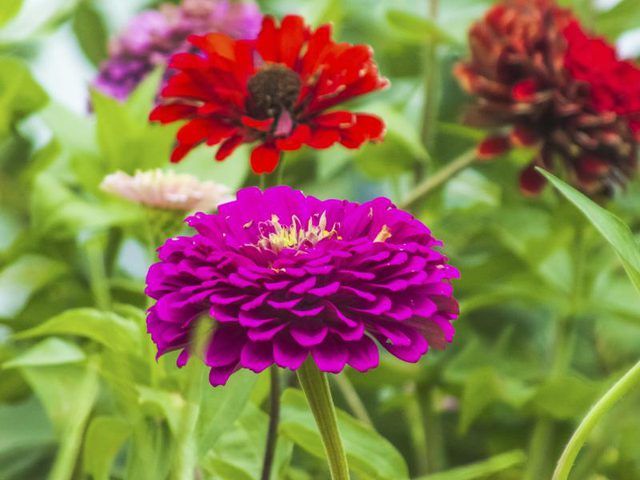Bulbs
Flower Basics
Flower Beds & Specialty Gardens
Flower Garden
Garden Furniture
Garden Gnomes
Garden Seeds
Garden Sheds
Garden Statues
Garden Tools & Supplies
Gardening Basics
Green & Organic
Groundcovers & Vines
Growing Annuals
Growing Basil
Growing Beans
Growing Berries
Growing Blueberries
Growing Cactus
Growing Corn
Growing Cotton
Growing Edibles
Growing Flowers
Growing Garlic
Growing Grapes
Growing Grass
Growing Herbs
Growing Jasmine
Growing Mint
Growing Mushrooms
Orchids
Growing Peanuts
Growing Perennials
Growing Plants
Growing Rosemary
Growing Roses
Growing Strawberries
Growing Sunflowers
Growing Thyme
Growing Tomatoes
Growing Tulips
Growing Vegetables
Herb Basics
Herb Garden
Indoor Growing
Landscaping Basics
Landscaping Patios
Landscaping Plants
Landscaping Shrubs
Landscaping Trees
Landscaping Walks & Pathways
Lawn Basics
Lawn Maintenance
Lawn Mowers
Lawn Ornaments
Lawn Planting
Lawn Tools
Outdoor Growing
Overall Landscape Planning
Pests, Weeds & Problems
Plant Basics
Rock Garden
Rose Garden
Shrubs
Soil
Specialty Gardens
Trees
Vegetable Garden
Yard Maintenance
How to Care For Zinnias
How to Care For Zinnias. To brighten your summer garden with vividly colored flowers, include zinnias (Zinnia elegans) when choosing plants. An old-fashioned favorite that's especially easy-to-grow, the zinnia plant produces masses of colorful blossom throughout summer and early fall. Zinnias grow as annuals in all parts of the United States,...

To brighten your summer garden with vividly colored flowers, include zinnias (Zinnia elegans) when choosing plants. An old-fashioned favorite that's especially easy-to-grow, the zinnia plant produces masses of colorful blossom throughout summer and early fall. Zinnias grow as annuals in all parts of the United States, thriving in any sunny spot when given just basic care and some trimming now and then.
Off to a Good Start
Start zinnias indoors from seeds four to six weeks before your last frost date, or direct-sow zinnia seeds in the garden once temperatures remain above about 60 degrees Fahrenheit. It's important to give plants enough space to grow without crowding, so thin direct-sown seedlings or space indoor-grown seedlings to allow about 6 inches between shorter varieties and about 12 inches between plants for types that become 2 or more feet tall.
To ensure season-long flowers, sow more seed every two or three weeks until early summer; new plants will produce healthy flower buds when the first plants are beginning to slow their growth and shut down flower production as fall approaches.
Watering and Feeding
Water newly planted zinnias frequently during the first week or two, keeping the soil evenly moist until roots become established. Then water whenever soil feels dry an inch or two below the surface, aiming for about 1 inch of water each week, including rain. Adding 3 or 4 inches of organic mulch such as straw or shredded bark under each plant's canopy also helps conserve soil moisture while keeping down weeds, but keep the mulch back a few inches from each plant's base to discourage fungal growth.
Fertilizing zinnias helps keep new flower buds coming non-stop through most of the season. Give an initial feeding when seedlings are about 4 inches tall, using a 5-10-5, water-soluble formula. Dilute the fertilizer to 1/4 strength, or 1/4 teaspoon per 4 gallons of water, but check your product label for additional directions. Feed again in mid-summer to keep the plants growing and flowering as long as possible.
Trimming and Deadheading
Zinnias are naturally bushy plants, especially when grown in full sun, but pinching out new growth on young plants helps promote extra branching, making plants even fuller and providing more stems that produce blossoms. If you do this when shoots are young and tender, you can pinch out soft new growth with your fingers. To trim back slightly larger stems, use sharp shears, disinfecting the blades by wiping them with rubbing alcohol between cuts to discourage spread of plant disease.
As flowers fade on zinnia plants, cut these off just ahead of the first set of leaves on the flower stem -- called deadheading. This helps spur production of new flower buds on the remaining stems and also helps keep the plant looking tidy. Because zinnias are annuals, they don't survive winter, but leaving a few spent flowers on the plant allows seeds to mature that can drop to the ground. These may produce new, "volunteer" seedlings the following spring.
Preventing Problems
Zinnias are susceptible to several fungal disorders, including powdery mildew, which makes zinnia leaves look whitish and sprinkled with powder. Eventually, leaves turn brown, then dry up and fall from the plant. Mildew is best prevented by choosing mildew-resistant varieties, spacing plants properly and watering plants with a soaker hose or drip irrigation that helps keep foliage dry.
Zinnias can attract a few pests, including Japanese beetles and some caterpillars that chew foliage, slowing plant growth and potentially stopping flower development. Destroy these pests by handpicking them. You might also see whiteflies, tiny white flying insects, and soft-bodied, yellowish aphids; these insects suck plant juices and slow flowering. Rid the plant of these pests by spraying it until dripping with insecticidal soap, diluted at a rate of 5 tablespoons per gallon of water. Repeat the spray every two weeks as needed.